Your car’s tires are crucial for maintaining safety, performance, and fuel efficiency. Proper tire maintenance can help you extend their lifespan, saving you money and ensuring a smooth driving experience. Whether you’re a seasoned driver or new to car care, this ultimate tire maintenance guide will help you understand the best practices to keep your tires in top condition for as long as possible.
Why Tire Maintenance Matters
Tires are the only part of your car that makes direct contact with the road, meaning their condition plays a significant role in your vehicle’s overall performance. Poor tire maintenance can lead to:
- Reduced fuel efficiency
- Uneven tread wear
- Poor handling and braking
- Increased risk of blowouts or accidents
By following a regular tire maintenance routine, you’ll not only extend the life of your tires but also improve your driving safety and save money in the long run.
Essential Tire Maintenance Tips
1. Check Tire Pressure Regularly
One of the simplest but most important aspects of tire maintenance is ensuring that your tires are properly inflated. Under-inflated or over-inflated tires can lead to uneven wear, reduced fuel efficiency, and compromised handling.
- How to Check Tire Pressure:
- Use a tire pressure gauge to check the pressure at least once a month or before long trips.
- Compare the reading to your vehicle’s recommended tire pressure, which is usually found in the owner’s manual or on a sticker inside the driver’s door.
- Inflate or deflate your tires to match the recommended pressure.
Tip: Tires naturally lose pressure over time, so regular checks are necessary—even if your tires look fine to the eye.
2. Rotate Your Tires
Rotating your tires involves moving them from one position on your vehicle to another. This helps promote even tread wear, as front and rear tires tend to wear at different rates due to variations in weight distribution and driving patterns.
- When to Rotate: Most experts recommend rotating your tires every 5,000 to 7,500 miles, or every six months.
- Rotation Pattern: The most common rotation pattern is moving the front tires to the rear and crossing the rear tires to the front. However, the appropriate pattern for your vehicle may vary, so consult your owner’s manual.
Tip: Regular tire rotations can help extend the lifespan of your tires by distributing wear more evenly across all four tires.
3. Balance Your Tires
Tire balancing ensures that the weight of the tire and wheel is evenly distributed, which reduces vibrations, improves comfort, and prevents uneven wear.
- Signs Your Tires Need Balancing:
- Vibrations in the steering wheel, seat, or floorboard when driving at certain speeds.
- Uneven or patchy tire wear.
- When to Balance: Get your tires balanced whenever you notice vibrations or when new tires are installed. Balancing is usually done during tire rotations or alignment services.
Tip: Properly balanced tires reduce strain on your suspension system and improve overall driving comfort.
4. Check Tire Tread Depth
Tire tread is essential for providing grip and traction, especially on wet or slippery roads. Over time, the tread wears down, and once it reaches a certain point, your tires can no longer safely grip the road.
- How to Check Tread Depth:
- Use a tread depth gauge, or try the “penny test”: Insert a penny into the tire’s tread with Lincoln’s head facing down. If you can see the top of Lincoln’s head, your tread is too worn, and it’s time for new tires.
- Minimum Tread Depth: The legal minimum tread depth in most places is 2/32 of an inch, but it’s recommended to replace tires when they reach 4/32 of an inch for better performance in wet conditions.
Tip: Uneven tread wear may indicate other issues like improper alignment or under-inflated tires, so keep an eye on your tread patterns.
5. Maintain Proper Wheel Alignment
Wheel alignment ensures your tires are angled correctly, which is critical for even tread wear and optimal handling. Misaligned wheels can cause your car to pull to one side and lead to premature tire wear.
- When to Check Alignment: It’s a good idea to have your alignment checked whenever you notice uneven tire wear, your car pulls to one side, or after hitting a curb or pothole.
- Signs of Poor Alignment:
- Uneven or rapid tire wear.
- The steering wheel is crooked when driving straight.
- Your car pulls to one side.
Tip: Proper alignment not only extends the life of your tires but also improves fuel efficiency and handling.
6. Avoid Overloading Your Vehicle
Your vehicle’s tires have a specific load capacity, and exceeding this limit can put extra pressure on the tires, leading to overheating, tire failure, and rapid wear.
- How to Avoid Overloading:
- Check your car’s load rating, which is usually listed in the owner’s manual or on the tire sidewall.
- Avoid carrying unnecessary heavy loads, especially on long trips.
Tip: Driving with a properly loaded vehicle reduces stress on your tires and improves fuel efficiency.
7. Inspect Tires for Damage
Regularly inspecting your tires for signs of damage, such as cracks, bulges, cuts, or punctures, can prevent serious issues like blowouts. Make it a habit to inspect your tires at least once a month or before long road trips.
- What to Look For:
- Cracks: Cracks in the sidewalls or tread may indicate aging tires that need replacement.
- Bulges: A bulge indicates a weak spot in the tire that could lead to a blowout.
- Punctures: Small punctures can often be repaired, but large or sidewall punctures require tire replacement.
Tip: If you notice any damage, it’s best to have the tire inspected by a professional mechanic for repair or replacement.
When to Replace Your Tires
Even with the best tire maintenance, all tires will eventually need to be replaced. Signs that it’s time for new tires include:
- Tread depth is below 2/32 of an inch.
- Uneven or excessive tread wear.
- Visible damage like cracks, cuts, or bulges.
- Frequent loss of tire pressure.
Remember, regularly maintained tires not only last longer but also contribute to a smoother and safer driving experience.
Final Thoughts
Taking care of your tires doesn’t require a lot of time or technical knowledge, but it does require consistency. By following the tire maintenance tips outlined in this guide, you’ll help maximize the lifespan of your tires, enhance your vehicle’s performance, and ensure a safer driving experience.
Investing time in proper tire care is a small effort that yields big rewards. From checking tire pressure to ensuring proper alignment, these simple steps can save you money on replacement tires and prevent potentially dangerous situations on the road.
Have more questions about tire maintenance? Leave a comment below, and we’ll be happy to help!
Read more about Common Car Problems and How to Fix Them Yourself










